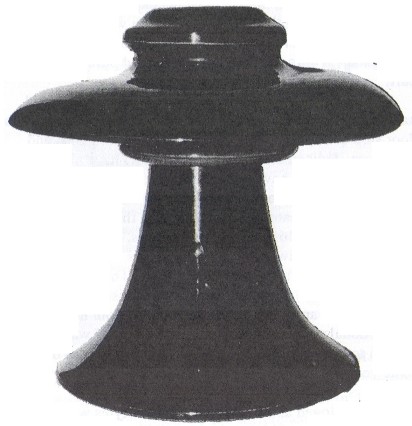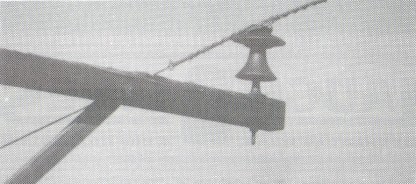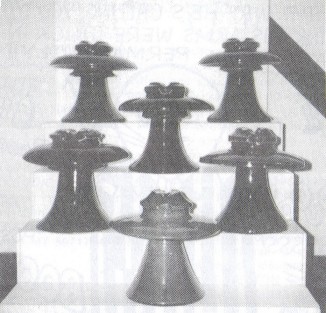GRACE and ELEGANCE
by Dennis Stewart
Reprinted from "Crown Jewels of the Wire", June 1998, page 35
Upon arriving Sunday morning to the annual London, Ohio show, I noticed one
insulator in particular was drawing quite a bit of attention. Several people
examined it after the piece came out from its secure hiding place under one of
the tables. It was photographed and returned to its owner with rumor that it was
already spoken for with a potential purchaser lurking near by. The specimen was
a
rare one indeed with only a hand full known to be in "captivity". What
was a real surprise is that the object of attention was not some rare cobalt
threadless or an amber screw-top Boston. It wasn't even glass! It was an M-2636
O-B marked porcelain multipart!
It wasn't that many years ago that this unit would have been scoffed as a
"boat anchor" and relegated to use as a door stop or driveway marker.
Thanks to Elton Gish and some very dedicated collectors, these units have not
only gained respect but have been given identities beyond "large brown
power piece" and have enabled collectors and dealers alike to communicate
intelligently about these classics.
The M-2636 and its close Cousins, M-2635,
M-2640 and others, have always been my favorites and have long been my most
sought after and coveted styles. The graceful lines and elegant flairs give
these units that unmistakable early "classic" look and easily
distinguish them from more modern conventional styles still seen on lines today.
I was fortunate enough to have acquired several different examples of these some
years ago as they have become much harder to find these days.
Cataloged as early
as 1907, these styles were pioneering the insulation of high voltage needed to
run the main transmission for the earliest electric Interurban trains. These
interurbans were a type of long distant trolley which sprang up in Ohio and
Indiana near the turn-of-the-century. As the distances increased and more substations needed power supply, the voltage
reached the 30,000 range. These tall saucer shapes with their exaggerated pin
protecting flared bottom shells seemed to be the answer and hundreds of miles
of three phase circuits with these units in use sprouted out like spokes on a
wheel from major cities such as Cincinnati, Columbus and Indianapolis to smaller
cities around them.
These units were probably made and used by the thousand. So
what happened to them all? Why are they so hard to find? The car, bus and truck
spelled the end of the interurbans by the 1930s and the rails and lines lay
idle. Some lines were used as a convenient path for upgraded high voltage power
lines and the rails were dismantled. The history and demise of the interurbans
is a story in itself which I will leave to others but it is known that many
abandoned lines during W.W. II were salvaged for the wire which was to be recycled
for its importance to the war effort as strategic material. Unfortunately for
the sake of expedience, instead of untying the wire, the insulators were simply
smashed with a hammer and the wire would pop free. Ouch!

These "lily shell"
styles were also used on standard power transmission lines and though most were
replaced with upgraded equipment decades ago a few have survived into modern
times as a recent color photo attests. Fortunately, not all the specimens
suffered the blows of a hammer and occasionally a lineman would save one for a
flower pot or lawn ornament or just for the sheer novelty and appreciation of the graceful shape. Occasionally one will turn up
at a flea market or in an antique mall after their owners no longer had a use
for them. On the rare occasion that one is found it is usually resting upside
down and is being peddled as a novelty ash tray, vase or candle holder. If you
run across one, get it! You will have a winner.

M-2636 still in the air... and those now settled in
"on the ground"
in the collection of Dennis Stewart.

Thanks to Robert Winkler, Jerry Turner, Elton Gish and Alan Stastney for
information supplied. .
| 